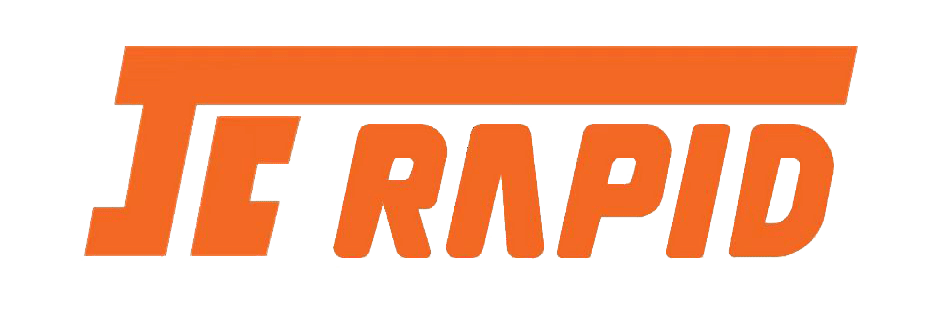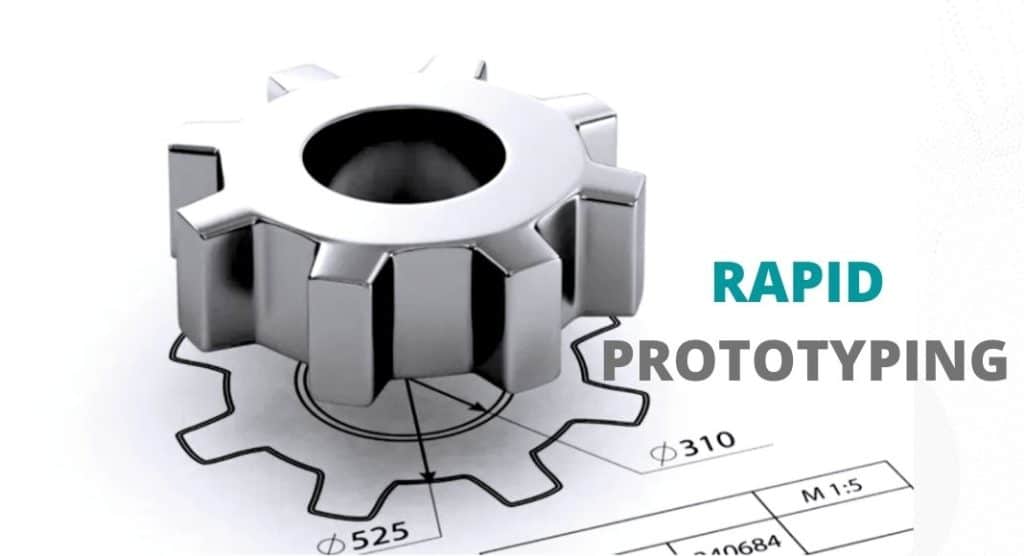A streamlined product development process is critical for your company if you are dedicated to product development.to build the best products, research and prototyping.are essential to make your product development process more optimized and faster. Prototyping is one of the key processes of that. We understand that you might be struggling to define which prototyping technology would best fit you. Rapid prototyping is becoming increasingly popular since it allows to development of products in a shorter amount of time and thus remains highly competitive. But what is rapid prototyping exactly? Which are the main rapid prototyping techniques? How to choose the right one for your project? Which material would be the best? Here is our special guide for a successful rapid prototyping project!
What is Rapid Prototyping? And Building a competitive prototyping process.
Using CAD software, rapid prototyping technologies are techniques used to create a real-scale model of an object in a short lead time. They include 3D printing, subtractive manufacturing (turning, milling, drilling) and Vacuum casting.
Having an efficient and fast prototyping process is now key for any business. Indeed, it’s one of the major concerns of companies these years. For instance, in our annual study, The State of 3D printing, 28% of our respondents told us their top priority for this year was accelerating product development. As a result, any company needs high-performance prototype solutions to build the best final product in a shorter lead time and incorporate feedback as fast as possible, with maximum agility.
How to find the right prototype tool? Rapid prototyping technologies might be the answer for you!
Introducing Rapid Prototyping technologies
What are the common types of rapid prototyping available to use? Let’s first start with the basics of rapid prototyping technologies. We’re now taking you on a guided tour of existing techniques.
Additive Manufacturing
Additive manufacturing, also called 3D printing, is a technique that produces objects from 3D files by fusing material layer by layer using a 3D printer. Various additive manufacturing technologies exist, such as Selective Laser Sintering (SLS), which can be used for plastic 3D printing, Direct Metal Laser Sintering (DMLS) which can be used for metal 3D printing, or Fused Deposition Modeling (FDM); also for plastic parts.
Vacuum Casting
Vacuum casting is a technique for creating several parts from the first model used as a reference. This initial part is usually made using additive manufacturing technology. Once the object is 3D printed, a soft mould is created around it with silicone rubber. It is cured and then removed. Afterwards, the mould can be filled with the final material – usually resin. Life would be from 15-20 timing of operations.
Subtractive Manufacturing
Subtractive manufacturing is a technology which uses an opposite approach. Here, layers are not added on top of each other: a machine removes parts from a block of material until the desired shape is ready. Subtractive manufacturing includes several technologies, such as:
Turning: A moving cutting tool removes material from a part placed in high-speed rotation.
Milling: The cutting tool is placed in high-speed rotation, and its cutting edges remove material from the part.
Drilling: A cutter rotates on the part to drill holes.
How to choose between Rapid Prototyping techniques
Now that you know more about the different rapid prototyping technologies, here’s our guide to help you find your way through their specificities and to make the best choice for your product development process.
Which criteria should you take into account?
There are several questions you should ask yourself when it comes to choosing the right rapid prototyping technique for your product development project:
What level of quality are you expecting for this prototype? Is it a low-fidelity or medium-fidelity prototyping project, or even functional prototyping?
Fidelity to the final product is also important. Do you need a prototype which will look and feel exactly like the object to be manufactured?
The complexity of the part is essential. For a highly-complex object, you will need a highly-precise rapid prototyping technology.
Do you need specific material properties? Like, should your prototype be flexible or made of robust metal? This will influence your choice of rapid prototyping technique.
The desired quantity is also essential: some technologies are only effective for a small number of parts.
And, of course, your available resources are a key element to consider. How much time do you have? And what’s your budget?
Considering these questions, we’ll review each technology to see which is best for your product design process.
3D printing is the fastest and cheapest technique
First, 3D printing is the fastest rapid prototyping technology, which is quite convenient when you aim to get a prototype quickly. It makes your research and development process more efficient.
Moreover, additive manufacturing is the cheapest rapid prototyping technology for small batches because it takes less time to prepare the machines for production than other rapid prototyping technologies. And when it comes to prototyping, you often only need small series of your parts.
But be careful with the price of 3D printing. Some designs are unsuited for this technology: if you use a substantial amount of material without hollowing your object, the cost can be quite important. Also, your 3D printing costs can increase if you wish to get a perfect surface aspect since you must choose some special finishing options. Thus, it’s the cheapest prototype technique where the aspect is not the first concern. If you need to get a preview of the final aspect, additive manufacturing might give you a very satisfying result, but it might not be the cheapest rapid prototyping technique.
If you need to create parts with complex geometries and intricate structures, 3D printing is also an excellent choice! For instance, it allows the creation of objects with impossible designs that you could not manufacture with other prototyping techniques, such as subtractive manufacturing.
Also, if you wish to create partially hollowed parts or with integrated assemblies, we strongly advise you to use additive manufacturing. This technology can produce these parts within hours at a reasonable cost compared to other rapid prototyping techniques.
Finally, a great advantage of additive manufacturing is that it can allow you to create your prototype directly with the final material of your product: some of our 3D printing materials are perfectly suited for creating final products. Thus, you won’t have to test other materials after the rapid prototyping step, so you gain precious time in your research and development phase.
Subtractive Manufacturing: The best surface finish and highest precision
Subtractive manufacturing also offers many advantages. First, it’s the most precise rapid prototyping technology, with better tolerances than 3D printing. Moreover, you can get a very good surface finish with subtractive manufacturing. This is great for an advanced step of your prototyping process.
But these technologies are more expensive than other techniques, such as 3D printing. Indeed, it takes more time to prepare the machines for production, and this has a cost, which is especially high for small production batches.
Also, creating complex parts using subtractive manufacturing isn’t easy, so it’s unsuitable for all kinds of designs.
Vacuum Casting: A good rapid prototyping technique for larger quantities
Vacuum Casting is also a very interesting rapid prototyping technique. It can create parts with good quality and a reasonable level of complexity. But since you first need to produce the mould, there are many steps involved in this process, so it’s not the fastest technique. With these many steps, you might lose some accuracy and end up with a low-fidelity prototype. So it’s not the best choice if you want a 100% reliable result.
Moreover, this rapid prototyping technology can only produce a large batch of parts since you create your mould. It would not make sense to take all of these steps in only 2 or 3 parts.
Do materials use Used in 3D printing?
Regarding rapid prototyping with 3D printing, different cases will define which material and technology you should use.
If you wish to create an early prototype, don’t invest too much in the visual quality of your material. You’re just trying to check that the shape is satisfying. We advise you to use relatively cheap materials and not to spend too much on this step of the process. Raw Nylon PA12, made with Selective Laser Sintering technology, is a great choice.
If you need a prototype with a good surface aspect, select the material that resembles your final material. You can add some finishing options to your prototype to achieve such a result.
Some of our customers even found a way to make their product development process faster: they use the same material for prototyping and producing their final parts. As a result, they skip some precious steps of material testing. HP Multi Jet Fusion PA12 and CLIP resins are a common choice for our customers.
Moreover, don’t forget that it’s also possible to 3D print metal, which can be interesting for the last steps of your prototyping process. For instance, you can use materials such as Stainless steel, made with Direct Metal Laser Sintering technology.
About JC Rapid
Founded in 2002, JC Rapid is an innovator of on-demand digital manufacturing and continues to lead advances in rapid prototyping and CNC machining. We know what it takes to deliver a high-quality product on time and within budget. JC Rapid employs a team of experts in CNC machining and takes the best approach to everything we do. Tens of thousands of product developers and engineers worldwide trust JC Rapid to bring their products to life.
Questions? Contact our friendly sales team at [email protected]

